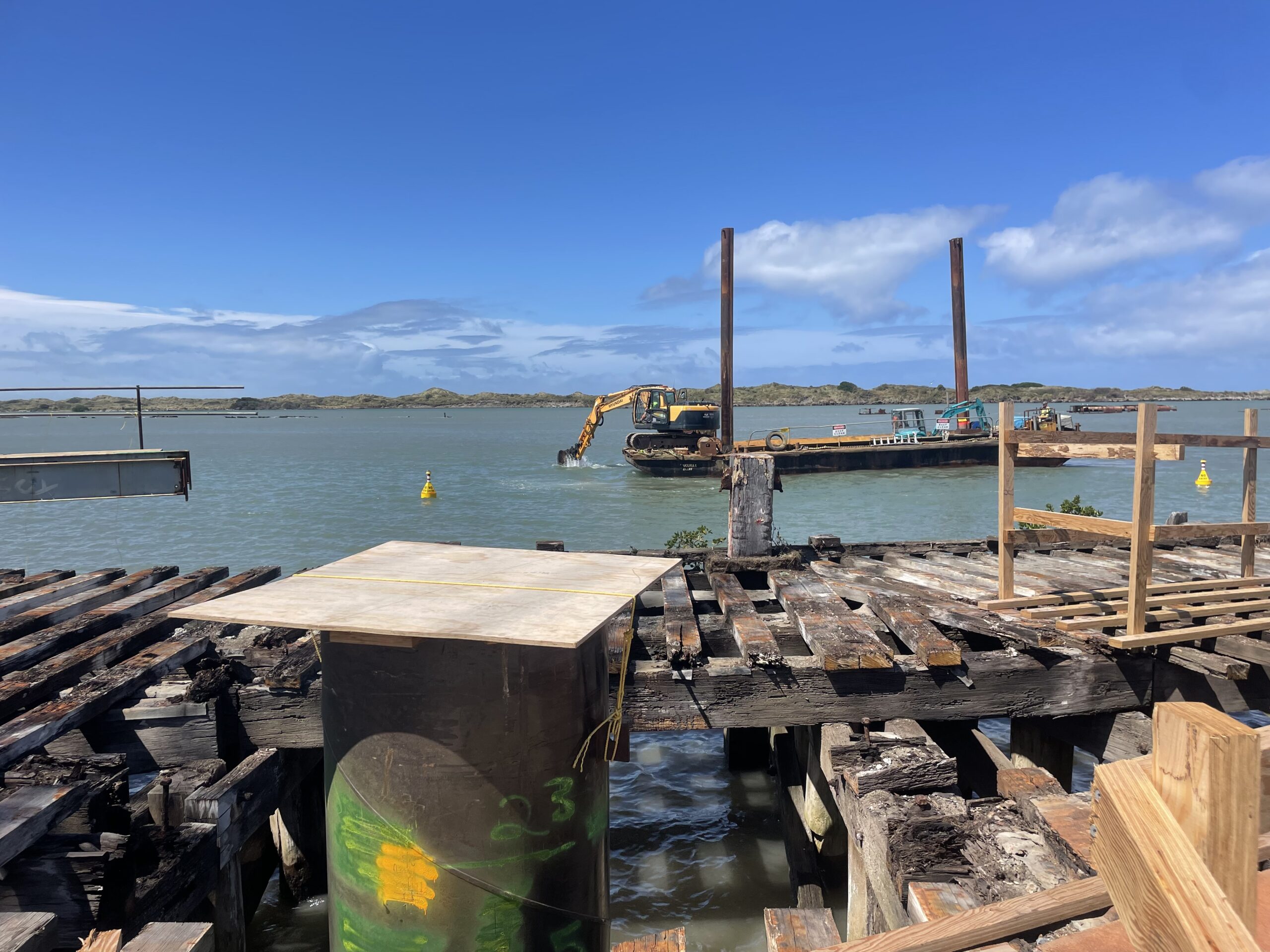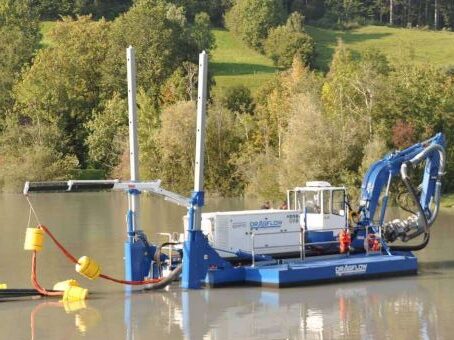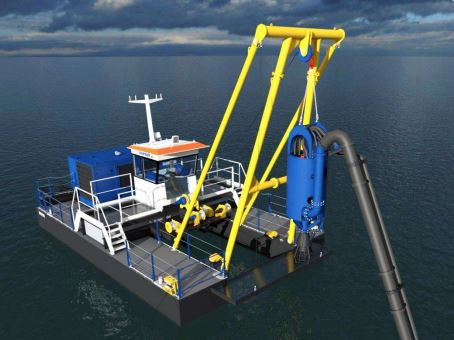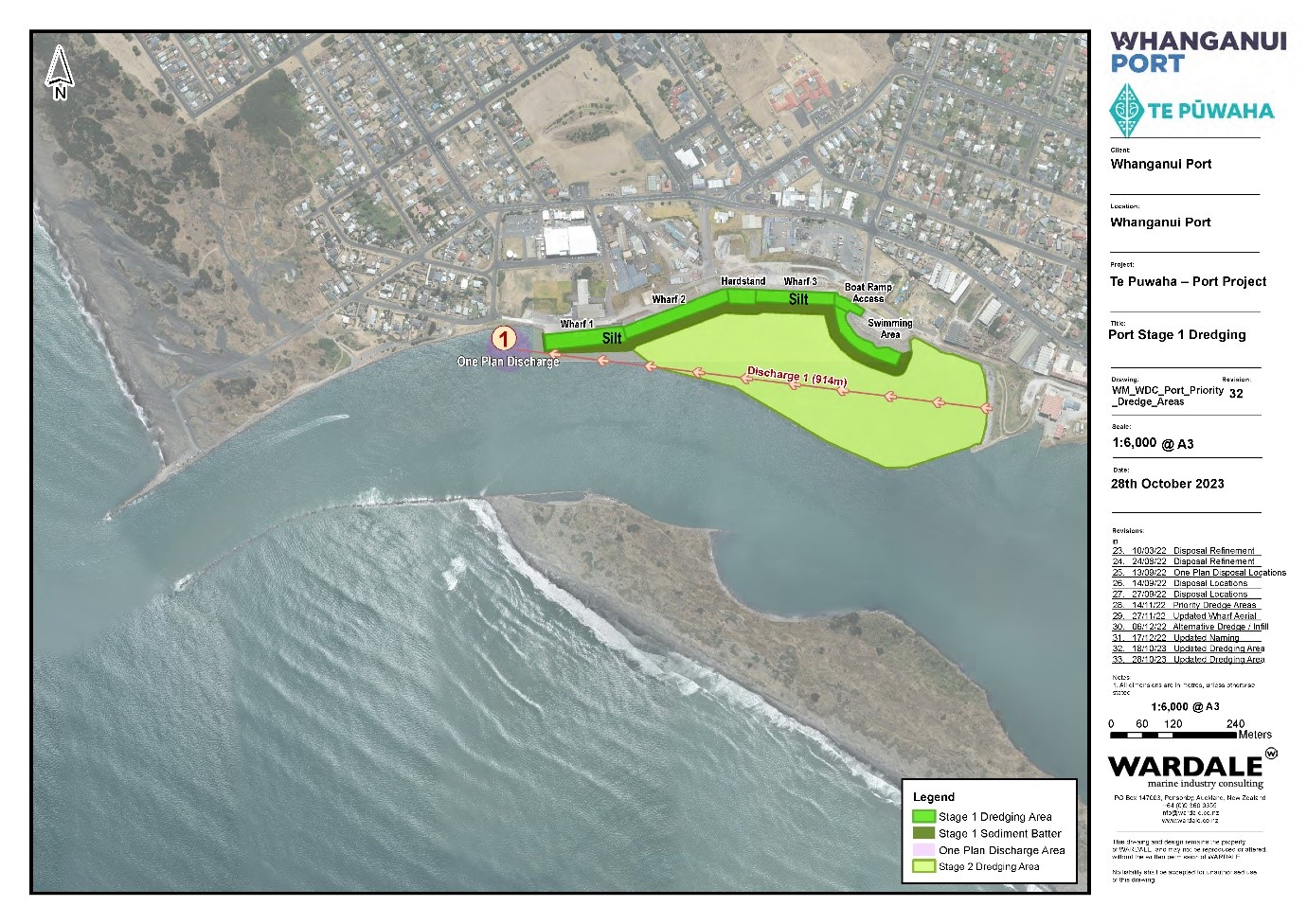Te Pūwaha: Long-term dredging consent
At this point in time, the Whanganui Port has a priority dredging consent which was approved early 2023, allowing Whanganui Port operators to dredge immediately around the three main wharves, along with the Wharf Street public boat ramp. This consent runs for two years and covers the channel from the boat ramp along to the port basin entrance.
The current dredging solution is an excavator and barge, with collected spoil released back into the channel downstream of the Whanganui Port.
Whanganui Port are now seeking a long-term dredging consent as the next major milestone in Te Pūwaha: the Whanganui Port revitalisation project. This long-term consent will eventually replace the priority dredging consent for the port basin.
Te Pūwaha is premised on relationships and it is vital that all parts of our community see their value and voice within the project. The proposed dredging application is being approached in this way to ensure all work is done in a way that includes the whole community and recognises the legal status of the Whanganui River under the 2017 Te Awa Tupua (Whanganui River Claims Settlement) Act.
By doing so, the wellbeing of the people and the river will remain at the heart of this project.
We are putting significant effort into ensuring this project is set up in a way that supports community participation and leadership. We are aiming to improve on past ways of working, where community engagement would traditionally come late in the project.

Sediment flowing down the Whanganui River has built up over time in the Whanganui Port basin. It flows into the basin through the hole in the port basin training wall, creating an eddy, and is unable to escape back into the main channel unaided.
Because regular dredging has not occurred for a number of years, the silt has built up over time, to the point that access has become difficult for commercial operators, recreational boat owners, and the Whanganui Coastguard.
Dredging of the Whanganui Port basin will transport the silt back into the main channel of the awa, and therefore open up the port basin for greater use.
While there are other access points for recreational vessels to the Whanganui River, the Wharf Street boat ramp remains the most suitable due to its proximity to the moana, large parking area, and proximity to access roads.
Whanganui Port’s application for a long-term dredging and disposal consent is scheduled to be lodged in March 2024. The application will cover the removal of silt within the whole Whanganui Port basin, with the spoil to be released back into the main channel of the Whanganui River, immediately downstream of the basin during outbound tides.
Alongside the current permitted disposal sites, Te Pūwaha project partners are also in discussion with the regulatory authority on the possibility to include alternative disposal sites as assessed and approved by hapū.
The period of time the application for long-term dredging consent will cover is also currently under review by Whanganui Port and Te Mata Pūau. It has been agreed that a condition of the consent will allow for hapū to stop the consented activity at any time. The health of our awa is of paramount importance and the leadership of hapū vital in what we see as an innovative methodology to consenting in Aotearoa.
The purpose of Te Pūwaha is to create Mouri Awa (abundance for the river), Mouri Ora (abundance for the wider eco-system) and Mouri Tangata (abundance for whanau, hapū, iwi and the wider Whanganui community). This means giving back to our awa and improving its health into the future. As with all aspects of the project, Whanganui Port as led by Te Mata Pūau will provide opportunities for abundance and enhancement, creating greater community connection with awa, behavioural change, education opportunities and ecological restoration.
Whanganui Port are committed to enhancing the health and wellbeing of Te Awa Tupua above and beyond mitigating the impacts caused by any consented activity. This requires us to deliver outputs that are designed through a collective mind-set that acknowledges the awa as an indivisible physical and metaphysical entity. Such acknowledgement allows us to more effectively address the awa’s wellbeing. This will likely include water quality improvements, shell fish restoration, ecological outcomes and dune restoration activities designed and facilitated alongside community, kura/schools, and our rangatahi.
The Whanganui Port is currently in the midst of the procurement process to source a new dredge for the Whanganui Port basin. The current preferred dredging option is a cutter suction dredge, however the Whanganui Port will consider other viable options as presented. A cutter suction dredge will be more costly, yet more effective than the current dredging solution. It also means the sediment will not leave the water, allowing for pipi currently in the port basin to have a greater chance of successful relocation to the main channel of the awa.

Examples of possible dredge options

Whanganui Port’s dredging application will also include a proposal to close the hole in the training wall. This is considered necessary to future proof the port basin as it will reduce the build-up of sediment in the area.
The linkage could also include a recreational walkway for our community. Please note that this is not part of the current funded project and alternative avenues of funding will need to be sourced.
While the concept of a reclamation area upstream of the Whanganui Port basin has been discussed with our community previously, this area of work is not within the scope of the Te Pūwaha project and is therefore unfunded. A reclamation area in which dredging spoil could be placed, is not included within this long-term dredging application.
Because dredging has not occurred regularly for a number of years, the Whanganui Port basin has become an intertidal habitat with a sandy shore eco-system, supporting pipi and burrowing invertebrates. Because of this eco-system, hapū are mindful of not taking sediment out of the awa, and rather depositing it back into the flow of the main channel.
Long-term dredging will also create greater access and opportunities for both recreational and commercial use. The port basin will become a sheltered area for recreational water sports such as paddle boarding and kayaking, while the Whanganui Coastguard will have fewer limitations on access to the awa for emergencies and training.
Commercially, the Whanganui Port and on-site businesses will have greater opportunities thanks to improved access, alongside revitalised facilities. Larger vessels will be able to enter the port basin which will enable the likes of Q-West Boat Builders to increase their building and maintenance services. This in turn will have positive knock on effects for local businesses.
We encourage you, our community to have your say. You can do this in numerous ways including:
- via our online feedback form
- emailing Phil Wardale, Whanganui Port project director – wardale@whanganui.govt.nz
- emailing Hayden Turoa, Te Puwaha project director – turoa@whanganui.govt.nz
- emailing the project team – portproject@whanganui.govt.nz, or
- face-to-face with hapū and community each Thursday. Just email portproject@whanganui.govt.nz for time and location.
Feedback will be taken into account as we receive it, it is the intention of the Whanganui Port to lodge for consent in March 2024.



